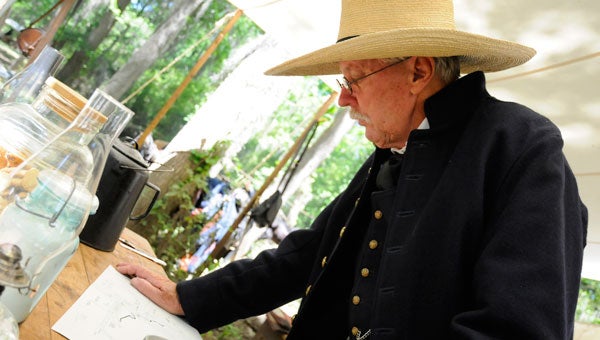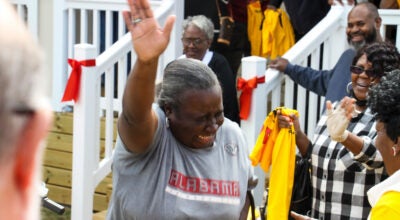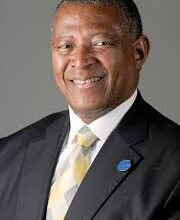Confederate, Union forces poised for weekend hostilities
Published 6:26 pm Friday, April 25, 2014

Maj. Gen. Joe Way looks over maps Friday in preparation for this weekend’s reenactment of the Battle of Selma at Riverside Park. This year’s reenactment marks the 149th anniversary of the battle between Union and Confederate forces. (Josh Bergeron | Times-Journal)
Union forces began planning their attack on Selma Friday on the banks of the Alabama River, in west Selma.
Maj. Gen. Joe Way stood outside of his tent, glaring at a map. Way contemplated how he might attack Ebenezer Church and force Confederates to retreat back into Selma. Way planned to begin staging his artillery near Valley Creek Friday, around dusk, and begin probing Confederate fortifications once the sun dipped below the western horizon.
“I’ll be probing the fortifications to see where there weaknesses are and how I can invade Selma and destroy it,” Way said. “I’m going to be pushing them back down in the swamp.”
He discussed the plans after having several strategic meetings with his Union soldiers. Way planned to attack the Confederate forces with approximately 300 Union soldiers. Way’s forces were camped near Valley Creek’s intersection with the Alabama River.
Confederate forces, led by Col. Brien McWilliams, were situated nearly 500 yards away at the northern end of an open field. McWilliams was preparing to defend Selma.
Plans were part of preparations for the 149th anniversary of the Battle of Selma. Battle re-enactment began Friday and will continue over the weekend, during the most well-known portions of the Battle of Selma.
The re-enacted battles will take place on a smaller portion of land and with less troops than the actual battle 149 years ago. Re-enactors and organizers expect about 700 soldiers to participate in the weekend re-enactments.
Though there are differences, McWilliams, from North Alabama, and Way, from Florida, said battle movements are mostly historically accurate.
“Commanders study various forms of written history leading up to the battle,” Way said. “We have briefings before battles and debriefings after, but the first and most important thing we have to get right is safety.”
Re-enactors don’t fire live rounds and are instructed to angle weapons upwards when within a certain distance of opposing troops, according to Way. Regardless of the fact the battle is a re-enactment, Way said soldiers often become passionate during battles.
“When we go over those works, these boys will be turned up,” Way said. “They really get into it sometimes.”
Casualties during the Battle of Selma re-enactment aren’t randomly determined. Rather, Way said deaths and injuries are based on historical accounts.
Muskets and horses are commonplace during the battle, but cannons — stationary and horse-drawn — will also be scattered on the battlefield.
Union re-enactor and Louisiana native Jack Key said one of the cannons sitting in his camp has a special historical value. The cannon is an 1860 Confederate Napoleon.
The cannon’s firing tube is one of two of its kind, made from a gun in Charleston, S.C.’s Fort Moultrie.





